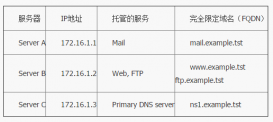1. 安装依赖包
请记住,Debian 默认并没有安装 sudo,请使用 root 安装它:
apt-get update && apt-get upgrade && apt-get install sudo
现在你可以安装必须包:
sudo apt-get update
sudo apt-get upgrade
sudo apt-get install -y wget curl gcc checkinstall libxml2-dev libxslt-dev libcurl4-openssl-dev libreadline6-dev libc6-dev libssl-dev libmysql++-dev make build-essential zlib1g-dev libicu-dev redis-server openssh-server git-core python-dev python-pip libyaml-dev postfix libpq-dev
数据库
SQLite
sudo apt-get install -y sqlite3 libsqlite3-dev
MySQL
sudo apt-get install -y mysql-server mysql-client libmysqlclient-dev
# Login to MySQL
$ mysql -u root -p
# Create the GitLab production database
mysql> CREATE DATABASE IF NOT EXISTS `gitlabhq_production` DEFAULT CHARACTER SET `utf8` COLLATE `utf8_unicode_ci`;
# Create the MySQL User change $password to a real password
mysql> CREATE USER 'gitlab'@'localhost' IDENTIFIED BY '$password';
# Grant proper permissions to the MySQL User
mysql> GRANT SELECT, INSERT, UPDATE, DELETE, CREATE, DROP, INDEX, ALTER ON `gitlabhq_production`.* TO 'gitlab'@'localhost';
PostgreSQL
sudo apt-get install -y postgresql-9.2 postgresql-server-dev-9.2
# Connect to database server
sudo -u postgres psql -d template1
# Add a user called gitlab. Change $password to a real password
template1=# CREATE USER gitlab WITH PASSWORD '$password';
# Create the GitLab production database
template1=# CREATE DATABASE IF NOT EXISTS gitlabhq_production;
# Grant all privileges on database
template1=# GRANT ALL PRIVILEGES ON DATABASE gitlabhq_production to gitlab;
# Quit from PostgreSQL server
template1=# \q
# Try connect to new database
$ su - gitlab
$ psql -d gitlabhq_production -U gitlab
(译者注:以上3种数据库根据需要安装其一即可)
2. 安装 Ruby
wget http://ftp.ruby-lang.org/pub/ruby/1.9/ruby-1.9.3-p194.tar.gz
tar xfvz ruby-1.9.3-p194.tar.gz
cd ruby-1.9.3-p194
./configure
make
sudo make install
3. 安装 Gitolite
为 Git 创建用户:
sudo adduser \
--system \
--shell /bin/sh \
--gecos 'git version control' \
--group \
--disabled-password \
--home /home/git \
git
为 GitLab 创建用户:
# ubuntu/debian
sudo adduser --disabled-login --gecos 'gitlab system' gitlab
将 gitlab 用户添加到 git 用户组:
sudo usermod -a -G git gitlab
将 git 用户添加到 gitlab 用户组:
sudo usermod -a -G gitlab git
生成密钥:
sudo -H -u gitlab ssh-keygen -q -N '' -t rsa -f /home/gitlab/.ssh/id_rsa
克隆 GitLab 的 Gitolite 分支源代码:
sudo -H -u git git clone -b gl-v304 https://github.com/gitlabhq/gitolite.git /home/git/gitolite
安装:
cd /home/git
sudo -u git -H mkdir bin
sudo -u git sh -c 'echo -e "PATH=\$PATH:/home/git/bin\nexport PATH" >> /home/git/.profile'
sudo -u git sh -c 'gitolite/install -ln /home/git/bin'
sudo cp /home/gitlab/.ssh/id_rsa.pub /home/git/gitlab.pub
sudo chmod 0444 /home/git/gitlab.pub
sudo -u git -H sh -c "PATH=/home/git/bin:$PATH; gitolite setup -pk /home/git/gitlab.pub"
权限:
sudo chmod -R g+rwX /home/git/repositories/
sudo chown -R git:git /home/git/repositories/
检查:退出并重新登录以使 git 用户组生效
# 克隆 admin 资源库以将 localhost 添加到 known_hosts
# 并且确认 gitlab 用户有权访问 gitolite
sudo -u gitlab -H git clone git@localhost:gitolite-admin.git /tmp/gitolite-admin
# 如果执行成功,你可以将其删除
sudo rm -rf /tmp/gitolite-admin
重要! 如果你不能克隆 gitolite-admin 资源库,请不要继续本次安装,请根据 Trouble Shooting Guide 并且确认你已经小心的完成上文的全部步骤。
笔者注:这一步测试能否克隆成功。本人没有注意这个提示,完成后续安装后发现怎么都不能通过git@localhost:gitolite-admin.git的方式克隆工程,原因就是ssh认证失败,所以请务必确认这一点。顺便说下本人ssh认证失败的原因: /etc/ssh/sshd_config配置文件里面PubkeyAuthentication的值为no,意味着不允许公钥认证,改为yes就可以了。如果还是不能克隆,重复下第3步,并且注意每个命令是否执行成功。或者删除git和gitlab用户,重新执行第3步。
4. 克隆 GitLab 源代码并安装先决条件
sudo gem install charlock_holmes --version '0.6.8'
sudo pip install pygments
sudo gem install bundler
cd /home/gitlab
# Get gitlab code. Use this for stable setup
sudo -H -u gitlab git clone -b stable https://github.com/gitlabhq/gitlabhq.git gitlab
(2013/1/6,最近发现最新的版本是4.0.0.rc2,这个版本已经没有支持sqlite,而我选择sql数据库的时候没有成功,
克隆之后执行、
sudo -u gitlab git checkout 2.9.1
可以回到2.9.1的版本,这个版本既支持sqlite,其gitlab管理界面也较美观。3.1.0以后的版本管理界面都有点难看。)
# Skip this for stable setup.(笔者注:执行了上个命令就不用执行这个命令了)
# Master branch (recent changes, less stable)
sudo -H -u gitlab git clone -b master https://github.com/gitlabhq/gitlabhq.git gitlab
cd gitlab
# Rename config files
sudo -u gitlab cp config/gitlab.yml.example config/gitlab.yml
选择你希望使用的数据库
笔者注:建议选择SQLite
# SQLite
sudo -u gitlab cp config/database.yml.sqlite config/database.yml
# Mysql
sudo -u gitlab cp config/database.yml.mysql config/database.yml
# PostgreSQL
sudo -u gitlab cp config/database.yml.postgres config/database.yml
# 修改 config/database.yml 确认输入了正确的用户名/密码
安装数据库 gems
# mysql
sudo -u gitlab -H bundle install --without development test sqlite postgres --deployment
# 或者 postgres
sudo -u gitlab -H bundle install --without development test sqlite mysql --deployment
# 或者 sqlite
sudo -u gitlab -H bundle install --without development test mysql postgres --deployment
初始化数据库
sudo -u gitlab bundle exec rake gitlab:app:setup RAILS_ENV=production
设置 GitLab hooks
sudo cp ./lib/hooks/post-receive /home/git/.gitolite/hooks/common/post-receive
sudo chown git:git /home/git/.gitolite/hooks/common/post-receive
确认应用程序状态:
sudo -u gitlab bundle exec rake gitlab:app:status RAILS_ENV=production
# OUTPUT EXAMPLE
Starting diagnostic
config/database.yml............exists
config/gitlab.yml............exists
/home/git/repositories/............exists
/home/git/repositories/ is writable?............YES
remote: Counting objects: 603, done.
remote: Compressing objects: 100% (466/466), done.
remote: Total 603 (delta 174), reused 0 (delta 0)
Receiving objects: 100% (603/603), 53.29 KiB, done.
Resolving deltas: 100% (174/174), done.
Can clone gitolite-admin?............YES
UMASK for .gitolite.rc is 0007? ............YES
/home/git/share/gitolite/hooks/common/post-receive exists? ............YES
笔者注:如果所有结果都是 YES,恭喜!你可以继续进行下一步。
5. 设置 web server
应用可以用下一个命令行动:
# 用于测试目的
sudo -u gitlab bundle exec rails s -e production
# 用于守护进程
sudo -u gitlab bundle exec rails s -e production -d
默认登录用户名及密码:
笔者注:记住这个用户名和密码,在通过浏览器登录gitlab工程主页的时候有用。
admin@local.host
5iveL!fe
6. 运行 Resque 进程(用于处理工作队列)
# 手动启动
sudo -u gitlab bundle exec rake environment resque:work QUEUE=* RAILS_ENV=production BACKGROUND=yes
# GitLab 启动脚本
sudo -u gitlab ./resque.sh
# 如果你使用 root 运行此脚本,会导致 /home/gitlab/gitlab/tmp/pids/resque_worker.pid 文件的拥有者为 root
# 将导致 resque 在下一次系统初始化中无法启动
自定义 Resque 使用的 Redis 连接
如果你希望 Resque 连接到一个非标准端口号或另一台服务器上的 Redis,你可以在 config/resque.yml 文件修改连接信息:
production: redis.example.com:6379
好了,我们已经拥有了一个工作正常的 GitLab 了,但请继续下去,有一些事情是必须完成的。
7.Nginx 与 Unicorn
(1). Unicorn
cd /home/gitlab/gitlab
sudo -u gitlab cp config/unicorn.rb.example config/unicorn.rb
sudo -u gitlab bundle exec unicorn_rails -c config/unicorn.rb -E production -D
(2). Nginx
# 初次安装 Nginx
sudo apt-get install nginx
# 添加GitLab 到 nginx sites
sudo wget https://raw.github.com/gitlabhq/gitlab-recipes/master/nginx/gitlab -P /etc/nginx/sites-available/
sudo ln -s /etc/nginx/sites-available/gitlab /etc/nginx/sites-enabled/gitlab
# 修改 **YOUR_SERVER_IP** 与 **YOUR_SERVER_FQDN**
# 为起初的 IP 地址与准备让 GitLab 服务的域名
sudo vim /etc/nginx/sites-enabled/gitlab
笔者注:本人最初的时候不知道这个配置文件怎么配置,在浏览器里输入服务器ip的时候老是出现“welcome to nginx”页面。
后来的配置是
listion 80; #监听所有80端口的客户端请求
server_name: 192.168.1.120; #这是我ubuntu服务器的ip地址。因为我们是小组局域网访问,所以直接配ip地址就可以了。远程访问的话可以通过vpn链接。
# 重启 nginx:
sudo /etc/init.d/nginx restart
(3). Init 脚本
在 /etc/init.d/gitlab 创建 init 脚本:
sudo wget https://raw.github.com/gitlabhq/gitlab-recipes/master/init.d/gitlab -P /etc/init.d/
sudo chmod +x /etc/init.d/gitlab
设置 GitLab 自动启动:
sudo update-rc.d gitlab defaults 21
现在你可以用这种方式启动/重启/停止 GitLab 服务:
sudo /etc/init.d/gitlab restart
















